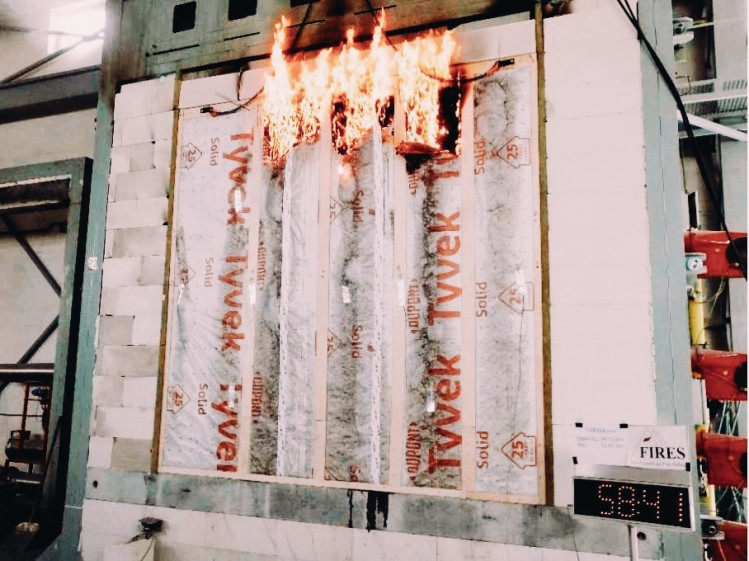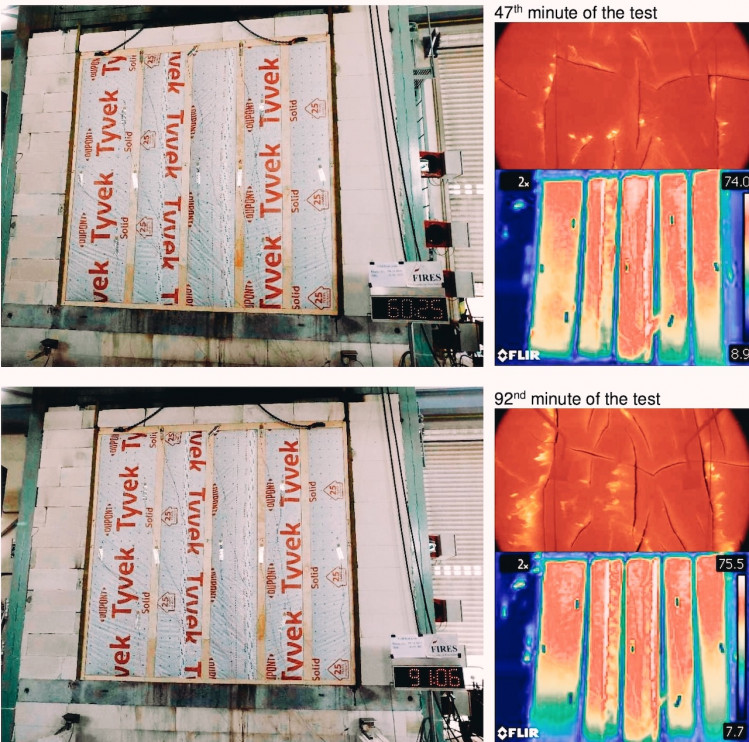We performed a new series of fire tests we would love to share with you.
Clients are looking for variety in their builds but also need to know the reality of how straw wall elements perform with different materials.
We previously tested our signature wall composition with applied interior clay plaster, achieving an impressive result of 120 minutes fire resistance. We also tested a bare straw wall segment with only the airtight membrane on the exterior, achieving 30 minutes.
With our latest 2021 fire tests, we explored the fire resistance of EcoCocon panels for different finishing materials. The tests will offer a greater range of possibilities to our clients.
Just how fire resistant is straw?
Fire resistance is one of the most frequent questions we get asked at EcoCocon. To begin with, fire cannot burn without oxygen. By making sure walls are dense and tightly packed, we create an airless environment.
The straw in our wall elements is compressed to a density as high as 110kg/m³ or 6.9 Ib/ft3 (no wolf is going to blow that down).
It might be surprising, but straw contains silica, a natural fire retardant. In addition, while burning, straw and wood create a charcoal insulation layer on the surface that protects the deeper layers from self-igniting.
There are examples of straw bale homes which survived Californian bush fires, when conventional structures were destroyed. Of course, nothing can resist fire forever, so rigorous testing of different wall compositions is an absolute must.
The award of new certifications
We already know that straw and clay plaster work really well in terms of fire-protection (as proved by our REI120 rating).
In our newest set of tests, we wanted to provide a wider choice of interior finish materials with a certified performance, aiming for at least 30 minutes fire resistance. This is usually the basic requirement for a family house. We picked 3 of the most popular interior finishes:
- Gypsum board
- Gypsum fibre board (Fermacell)
- Gypsum plaster
All three tests were awarded REI fire resistance certificates.
R means our material is load-bearing and will still maintain its ability to hold its load during a fire. A constant load of 70kN/m was exerted upon the wall during testing.
E relates to the integrity of the structure, which will not allow the passage of gas to unexposed areas.
I is its thermal insulation, meaning the element will not allow the transfer of heat to the unexposed, cold side until a certain time period has passed.
The number which follows REI gives the length of time in minutes the material resisted fire.
We were awarded fire resistance results as follows:
REI45 with 12.5 mm Gypsum Board (Knauf KGBi) - One layer
With gypsum board, our straw-insulated wall panels met conditions for 45 minutes. For those who want to work with a second layer, a local fire specialist could qualify it as REI60 with this added layer.
REI45 for 12.5 mm Gypsum Fibre Board (Fermacell) - one layer
Although Fermacell is thought to give better fire protection than gypsum board, there was only a marginal improvement of around three minutes. Again, a second layer would improve results considerably.
REI90 for 25 mm Knauf MP25 Gypsum Plaster
Gypsum can be sprayed to cover over electrical or heating cables, which makes it less labour intensive than other finishing materials. The test lasted 108 minutes, with little damage to the plaster.
You can find a detailed report in our download section.








